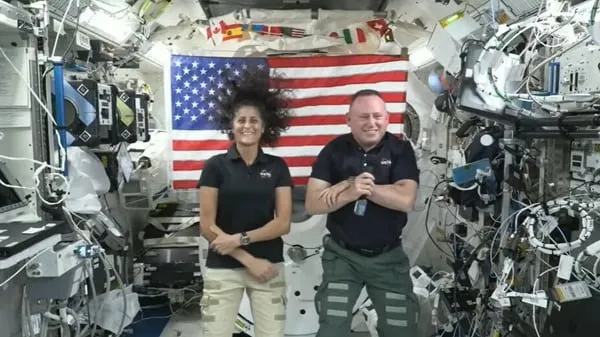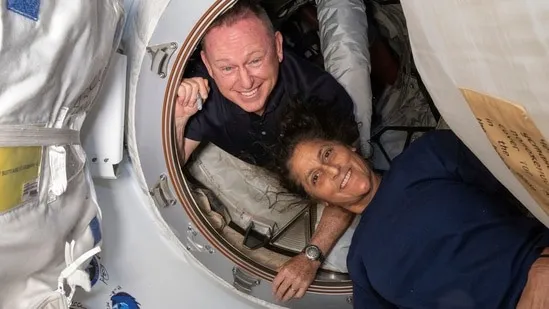NASA astronauts Sunita ‘Suni’ Williams and Barry ‘Butch’ Wilmore, originally scheduled to return from the International Space Station (ISS) last month, may now remain in space until August due to ongoing technical issues with Boeing’s Starliner spacecraft. This delay, caused by concerns over faulty thrusters and helium leaks during the Starliner’s launch, marks a prolonged stay for the duo, who are the first human crew aboard the Starliner on its historic test mission.

Astronauts’ Confidence in Starliner
Despite the setbacks, Sunita and Butch expressed confidence in the Starliner’s capability to safely return them to Earth. In their first press conference from space, they reassured reporters that they were prepared for any contingency, emphasising their trust in the spacecraft’s functionality amidst uncertainties about the return timeline.
Mission Activities and Integration
Since their launch on June 5, aboard a United Launch Alliance Atlas V rocket, Sunita and Butch have been actively conducting experiments and maintenance tasks on the ISS. They have integrated seamlessly with the Expedition 71 crew, assisting with scientific research and critical station upkeep.

Future of Commercial Crew Missions
Boeing’s Starliner, alongside SpaceX’s Crew Dragon, represents NASA’s strategy for commercial crew transportation to the ISS following the retirement of the Space Shuttle Program. While SpaceX has successfully completed numerous crewed missions to the ISS with its Crew Dragon, Boeing continues to refine the Starliner’s capabilities for future operational missions.
Program Funding and Mission Progress

Boeing received significant federal funding, exceeding USD 4 billion, through NASA’s Commercial Crew Program to develop the Starliner. In comparison, SpaceX received approximately USD 2.6 billion for its Crew Dragon, which has achieved 12 crewed missions to the ISS since its inaugural launch in May 2020.
As Sunita and Butch continue their testing and mission activities aboard the ISS, their extended stay underscores the complexities and advancements in space exploration facilitated by NASA’s collaboration with private industry partners. The ongoing efforts with Boeing’s Starliner and SpaceX’s Crew Dragon are pivotal in sustaining American spaceflight capabilities and fostering international scientific collaboration aboard the ISS.
